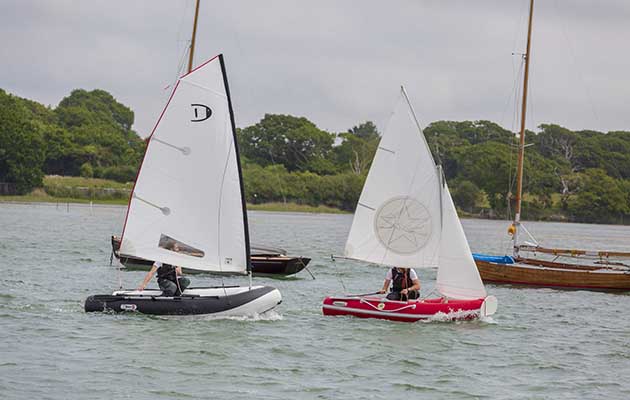Packrafting is growing in popularity, allowing easy access to the water due to the dinghy's portability and the fact is can be folded up to fit in a rucksack. Julia Jones takes a look at this beginner's guide
Packrafting: a beginner’s Guide
Chris Scott
Fernhurst, £10.99
Human ingenuity seems to know no bounds when it comes to devising ways to float without swimming.
Over the last two years so many people have taken to the water in such a variety of ways.
It doesn’t seem long since a stand-up paddleboard was a rarity; now they are ubiquitous, as are the guidebooks to accompany them.
Many cruising sailors choose to take some smaller vessel with them, in addition to their dinghy.
Perhaps for simple fun playing round the yacht at anchor, perhaps because so many family-sized inflatables are designed for use with outboards and are not therefore environmentally sensitive or easy to row.
Paddleboards or inflatable kayaks offer an opportunity for quiet, individual adventures without worrying about depth of water or disturbing the wildlife.
A packraft might have a similar appeal, though its prime quality, its lightweight and portability may be less essential for anything above a trailer-sailer.
Pack rafts look like the smallest inflatable dinghy, though they are designed to be paddled, not rowed.
Chris Scott differentiates them clearly from pool toys or what he calls ‘slackrafts’.
He describes optimal materials – principally TPU (thermoplastic polyurethane) which is significantly lighter than PVC and far more durable than vinyl – and essential design features such as one-way valves and inexpensive, lightweight pumps.
Because packrafts were developed with backpackers particularly in mind, weight is almost always the key criterion. The other is ergonomics.
Scott is very clear about the importance of good posture, perhaps necessitating an inflatable seat cushion but certainly making it important to have the correct length of paddle.
With trips of several days in mind, much ingenuity has been put into storage solutions.
Tent, sleeping bag, change of clothes, food must all be carried on the raft as well as strapped the pack when walking.
Continues below…
Books for sailors: our pick of the best new releases
Yachting Monthly literary contributor Julia Jones reviews all the latest new releases to pick the best books for sailors this…
The Best Gifts for Boaters and outdoor enthusiasts in 2025
Stuck for a Christmas gift idea for the sailor in your life? We choose the best Christmas gifts for sailors…
Best portable sailing dinghies for under £5k
We put six inflatable sailing dinghies under £5,000 to the test to see which one is the best all-rounder and…
Packrafts don’t glide like a kayak so they are not fast but are inherently more stable.
Contributor Rob Estivill describes techniques for carrying a bike on board. As well as the solitary marshland expeditions I had begun to imagine, they can be used for whitewater excitement and accessing shallow rivers, canals and lochs.
Here the author reminds us that there is minimal public right of access to English and Welsh non-tidal waterways, unlike in Scotland and most other countries.
A British Canoeing Waterways licence helps but access remains a contentious issue.
I found this Beginners Guide interesting and informative.
Yes, the packraft is a 21st century version of a bronze age coracle but they’ve proved durable.
Chris Scott’s very careful descriptions and explanations of the gadgetry did convince me that this system would work if one wanted to tramp the moorland as well as explore freshwater lakes and rivers.
Whether it would replace an inflatable kayak, SUP or collapsible sailing dinghy to enhance a summer cruise I’m not so sure.
One for the wilderness explorer rather than the cruising sailor.
Buy Packrafting: A Beginner’s Guide at Amazon (UK)
Buy Packrafting: A Beginner’s Guide at Amazon (US)
Buy Packrafting: A Beginner’s Guide at Waterstones (UK)
By clicking on the link we may receive a small amount of money from the retailer when you purchase the item. This doesn’t affect the amount you pay.
Enjoyed reading Packrafting: a Beginner’s Guide: book review?
A subscription to Yachting Monthly magazine costs around 40% less than the cover price.
Print and digital editions are available through Magazines Direct – where you can also find the latest deals.
YM is packed with information to help you get the most from your time on the water.
-
-
- Take your seamanship to the next level with tips, advice and skills from our experts
- Impartial in-depth reviews of the latest yachts and equipment
- Cruising guides to help you reach those dream destinations
-
Follow us on Facebook, Twitter and Instagram.







